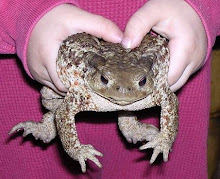Friday, December 20, 2013
Oops! More Common Moku Hanga Printing Errors.
I probably should have started with this one as it is one of the more common, "Oh No!" causes of printing errors--and not just for woodblock printers. The realization that the image has to be reversed on the block can be easily overlooked..... In this case, this was an early work and only the number "2" was missed....the title and other numbers were carved correctly.
Too Wet:
The Boar print has what is termed, "tamari"; the wet, dark halos around the numbers and many of the boar's bristles are from much too much moisture and pigment on the block and it's squeezing out onto the paper instead of being driven into the fibers during the printing.
In the lower example, the mottling of the green background is caused by too much moisture rather than pigment. It seems the wetness breaks down or washes out the size and this mottling won't go away with overprinting.
The paper won't really accept any more pigment and multiple printings don't seem to get any darker or more even.
Western Papers.
The grainy, ethereal, "atmospheric" effect is a hard to avoid defect of attempting to print on Western Papers.
The texture left in the paper surface from western paper screens during their manufacture remains and the pressure generated with the baren often isn't enough to print color smoothly.
A stronger baren, really firm pressure and certain papers are more accepting than others.
In the lizard print below, the red dewlap (skin flap) printed evenly while the blue background did not. It is printed on Magnani incisioni which can be printed smoothly with a lot of effort (as can Fabriano Artistico).
The easiest of Western papers to use for moku hanga printing is probably Rives lightweight and I've had decent results on that paper.
Sizing issues.
If the size is badly or unevenly applied it will show up in the finished print. This looks like the sizing brush was accidentally set down and the streak of extra size acted as a resist.
Harder to illustrate is the effect of too-weak size.
Prints will simply be "flat" or "lifeless" or the colors will never seem to really be vivid or strong despite multiple overprintings.
Brushstrokes.
If the pigment isn't brushed out evenly or there isn't enough paste in the color mix (or you're using cheap brushes), the brush strokes will show.
Again, sometimes this is a nice thing.
Sometimes it is a distraction.
In this case I liked it and as in the prints above, I kept all of them, defects included.
They serve as reminders of things to watch out for going forward.
But they also record my progress (or lack thereof) as a printmaker. As I struggle to become more professional it's helpful to look back and see where I've been. There is a naivety to some of these works that is still very appealing and I'd hate to lose that freshness and vitality in a search for clean edges and even color application.
This discussion will probably remain active for as long as I make prints. Stay tuned for the next disaster.
Subscribe to:
Post Comments (Atom)









These are great posts about common printing problems. I recognize all of them! Keeping the right amount of water is a constant battle for me. Also, using shina for very fine lines is pretty challenging and I often find that my carving, which might look great on the block, in fact contains some little over-reaches (nicks) from the knife that catch water and blob no matter how little water I use. I usually dread the keyblock layer because of this and sweat my way through it.
ReplyDeleteI can't recall seeing that rabbit before. I really like it.
Thanks, Annie. Yes, the nicking of shina is something I know well. I've had the same problem with hardwood blocks too if I undercut the keyblock with the aisuke instead of cutting the lines cleanly with a nice bevel for support. The thin lines act as an ink reservoir and small gobs spit out during printing. The rabbit was my "Year of the Rabbit" card for Baren's Zodiac exchange. The earrings were my son Sami's idea...and a good one
DeleteSo many "problems" that I would never have identified -- possibly because I'm an oily printer -- unless you told me they were problems. There are many pitfalls with oil-based inks as well. On my good days, I try to remind myself that these variations are examples of the artist's hand. If I wanted perfection, I would just print it out digitally. (Now on my bad days...)
ReplyDeleteI really love all of the brightly colored textures in your lizard print!